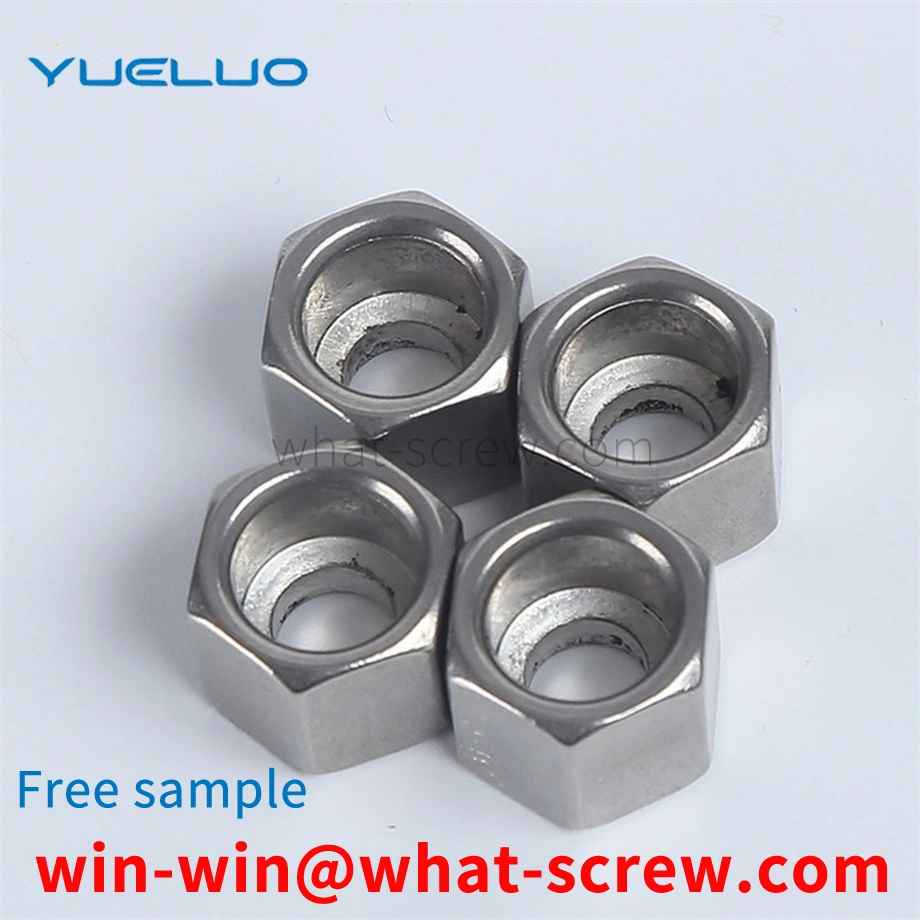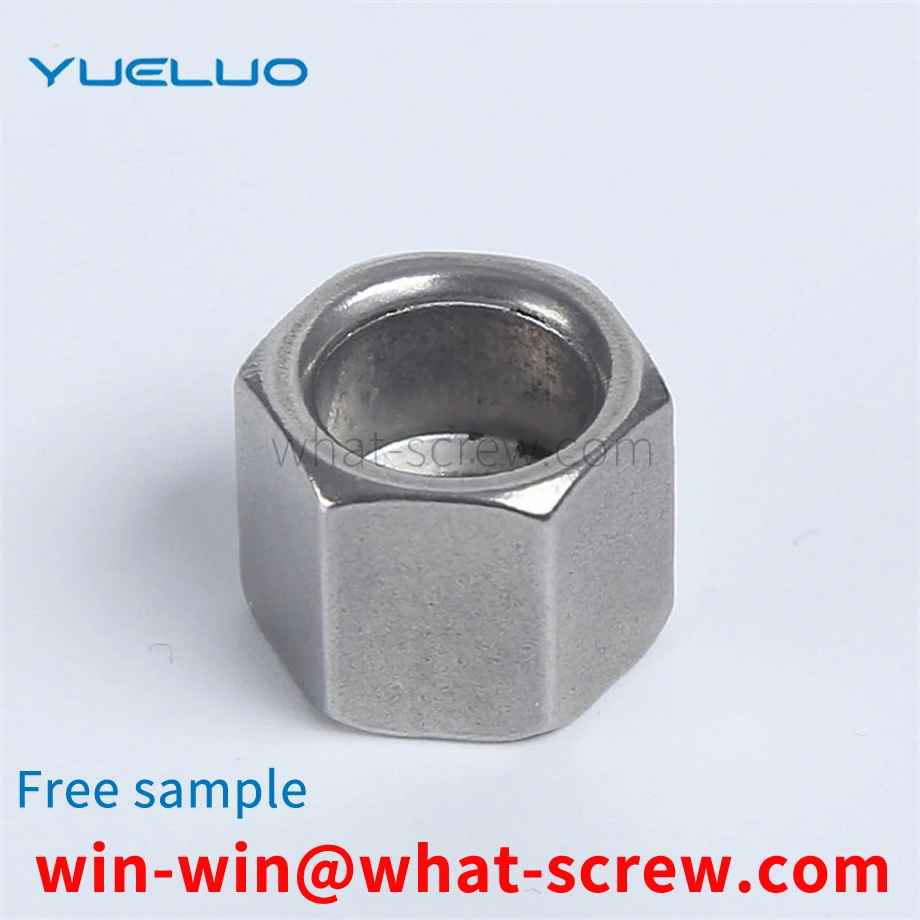The advantages of the pressure riveting nut: 1. The length guarantee of the distance range is realized, which greatly simplifies the assembly process and speeds up the production progress of the assembled spacing panel and accessories; 2. The back of the plate is completely embedded and flat, while ensuring the head of the nut column The plane is smooth with the plate; 3. The raw material is free-cutting iron or free-cutting stainless steel; the technical guide for the application of the pressure riveting standoff: 1. When selecting the standoff, it must be based on the thickness of the plate used, the exact size range, and the hardness of the low-carbon steel plate must be less than 70RB, the hardness of stainless steel plate must be less than 80RB. 2. The surface of free-cutting iron is treated, and the stainless steel maintains its original color. Users can order according to the model and specifications in the table according to their needs, or they can also make special orders according to their needs. 3. The hole size of the plate must be processed according to the tolerance size of 0-+0.075mm, and punching is recommended. 4. The installation must be realized by press riveting operation, and it must not be knocked in by impact. 5. When the material is stainless steel, the tail number should be marked with S. 6. The end face of the nut column is represented by C. 7. The length of the through-hole nut column is full wire below 10mm. If it is above 10mm, it can be reamed on the hexagonal end face (type I) or the round end face (type II).
When installing the ventilation duct, because the gap between the air duct and the wall and between the air duct and the air duct is deep and narrow, the arm cannot enter into it to operate, which brings about the installation of the screws and nuts at these positions. The following three methods are generally used: one is to directly break the wall for installation, but this method damages the building greatly, and cannot be used for the installation of screws and nuts in the gap between the air ducts; the other is to Set the inner flange in the air duct and connect it with bolts, which will reduce the effective cross-sectional area of the air duct and increase the resistance of the gas flow. Moreover, people need to enter the air duct for construction during installation. Considering the size of the air duct First, the supporting firmware with a high position and no force has certain hidden dangers; third, it is directly ignored and not done, but it is easy to cause the air duct connection is not tight and the air volume loss is large. The above-mentioned methods all have major construction defects, which not only waste a lot of manpower and time in the construction process, but also have the problem of low air supply efficiency.
Stud bolts generally need to be surface treated. There are many types of bolt surface treatments. Generally, electroplating, blackening, oxidation, phosphating, and electroless zinc flake coating are commonly used. However, electroplated fasteners account for a large proportion of the actual use of fasteners. Especially in automobiles, tractors, home appliances, instrumentation, aerospace, communications and other industries and fields are more widely used. However, for threaded fasteners, not only a certain anti-corrosion capability is required in use, but also the interchangeability of threads must be ensured, which can also be called screwability here. In order to meet the dual-use performance of anti-corrosion and interchangeability required by threaded fasteners in use, it is very necessary to formulate special plating standards. [1] The GB/T5267.1-2002 [Threaded Fastener Electroplating Coating] standard is one of the national standards Fastener Surface Treatment series of standards, which include: GB/T5267.1-2002 [Fastener Electroplating Layer]; GB/T5267.2-2002 [Fastener electroless zinc flake coating] two standards. This standard is equivalent to the international standard ISO4042; 1999 [Threaded fastener electroplating layer]. This standard replaces the GB/T5267-1985 [Threaded Fastener Electroplating Coating] standard.
double-headed pin puller includes a slider hammer and a sliding rod, two ends of the sliding rod are respectively provided with different types of pin-pulling parts, the pin-pulling parts are threadedly connected with the sliding rod, and the sliding rod is also provided with There is a sliding rod limit block, and the sliding rod is slidably connected with the slider hammer. The double-headed pin puller can install two types of pin-pulling heads at the same time, and can pull out two different types of pins. It is easy to use and has high work efficiency. Disadvantage: Single function, cannot be used to install pins.
With the advancement of technology in various industries, the current structural design of screws has evolved from just simple locking to focusing on work efficiency during the locking process and not destroying the integrity of the objects to be locked. The new cases such as No. 556784 screw improvement and No. 289414 screw that integrates locking, stability, labor-saving, fast and multi-function, which were previously designed and approved and published in the Central Taiwan Bulletin, are the main representatives of screws. It is clear that It is learned that the two cases not only fully improve the shortcomings of the traditional simple locking screws, but also achieve the purpose of substantial improvement of the screws designed in each case in actual use.
We have many years of experience in the production and sales of screws, nuts, flat washers, etc. The main products are: imported raw material screws, stainless steel anti-loosening washers, 1mm fine thread nuts, aluminum alloy tie rod top rod spacers and other products, we can provide you with Provide the right fastener solution for you.



















 Service Hotline
Service Hotline




